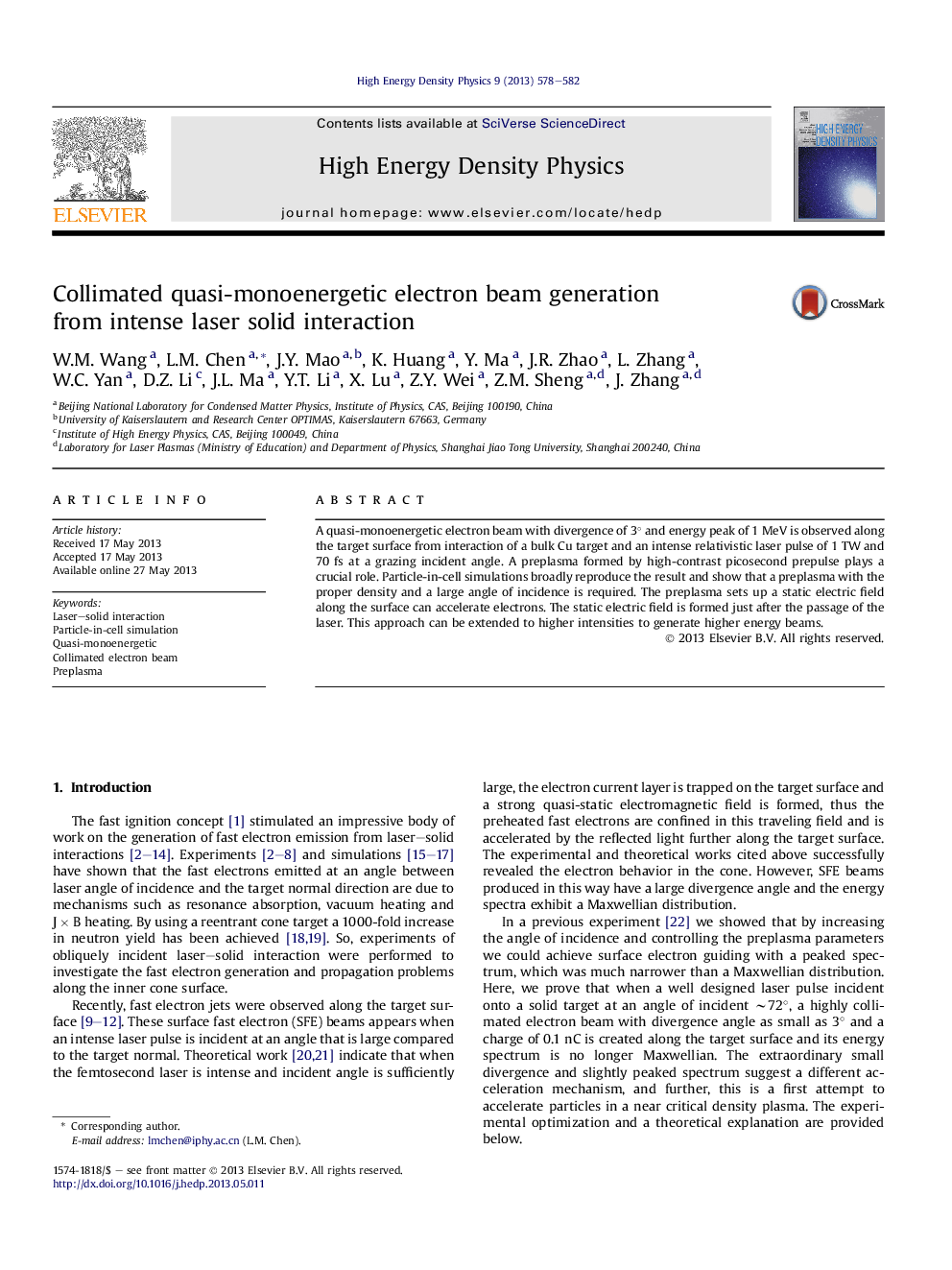| Article ID | Journal | Published Year | Pages | File Type |
|---|---|---|---|---|
| 1772482 | High Energy Density Physics | 2013 | 5 Pages |
Abstract
A quasi-monoenergetic electron beam with divergence of 3° and energy peak of 1 MeV is observed along the target surface from interaction of a bulk Cu target and an intense relativistic laser pulse of 1 TW and 70 fs at a grazing incident angle. A preplasma formed by high-contrast picosecond prepulse plays a crucial role. Particle-in-cell simulations broadly reproduce the result and show that a preplasma with the proper density and a large angle of incidence is required. The preplasma sets up a static electric field along the surface can accelerate electrons. The static electric field is formed just after the passage of the laser. This approach can be extended to higher intensities to generate higher energy beams.
Keywords
Related Topics
Physical Sciences and Engineering
Physics and Astronomy
Astronomy and Astrophysics
Authors
W.M. Wang, L.M. Chen, J.Y. Mao, K. Huang, Y. Ma, J.R. Zhao, L. Zhang, W.C. Yan, D.Z. Li, J.L. Ma, Y.T. Li, X. Lu, Z.Y. Wei, Z.M. Sheng, J. Zhang,
